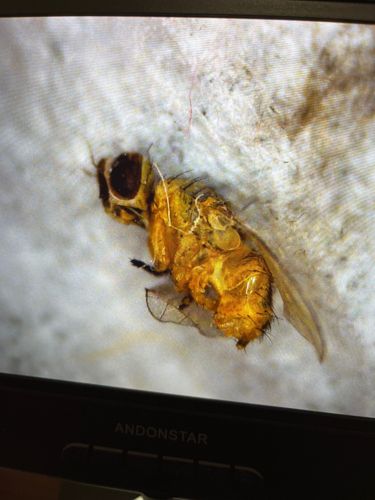Fruit Fly
Scientific Name: Drosophila melanogaster
Order & Family: Order: Diptera, Family: Drosophilidae
Size: Approximately 2-4 mm (0.08-0.16 inches) in length

Natural Habitat
Drosophila melanogaster is commonly found in human dwellings, kitchens, grocery stores, and anywhere ripe or fermenting fruits and vegetables, and other sugary substances are present. They can also be found outdoors near rotting vegetation.
Diet & Feeding
Adult fruit flies primarily feed on decaying fruits, vegetables, and other organic matter, particularly the yeast and bacteria associated with fermentation. Larvae feed on microorganisms present in their breeding substrate.
Behavior Patterns
Fruit flies are attracted to ripe and fermenting fruits and vegetables. They have a short life cycle (about 7-10 days from egg to adult in optimal conditions), allowing for rapid population growth. Females lay hundreds of eggs on the surface of fermenting food. Larvae feed on the yeast and bacteria in the fermenting material.
Risks & Benefits
Risks: While generally harmless to humans, they can be a nuisance pest, especially in kitchens and food preparation areas. They can potentially contaminate food with bacteria and yeast from their bodies, though this is usually considered low risk. Benefits: Drosophila melanogaster is a very important model organism in biological research, especially in genetics, developmental biology, neurobiology, and aging studies, due to its short life cycle, ease of breeding, and well-understood genome.
Identified on: 9/4/2025